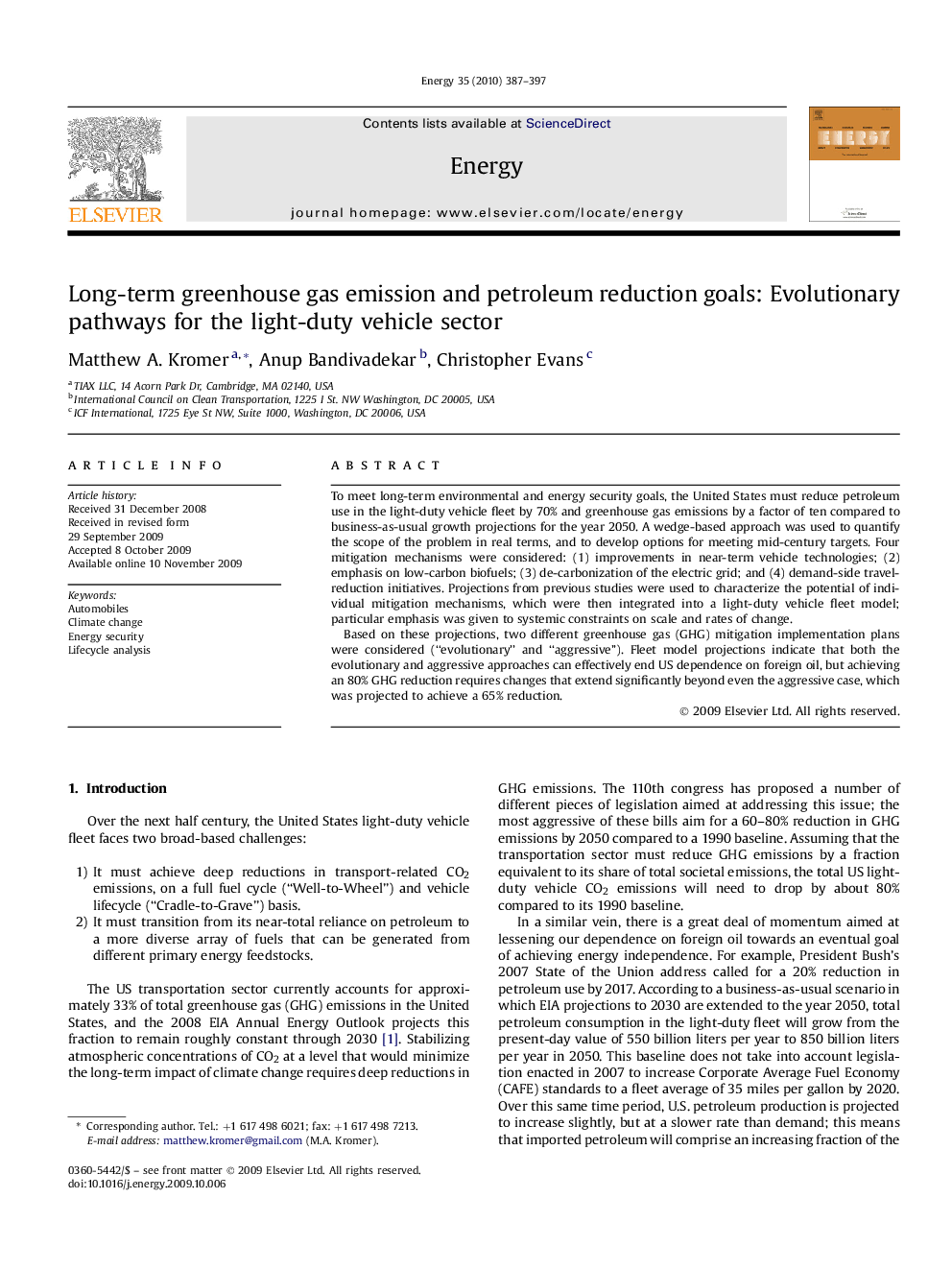| کد مقاله | کد نشریه | سال انتشار | مقاله انگلیسی | نسخه تمام متن |
|---|---|---|---|---|
| 1735230 | 1016174 | 2010 | 11 صفحه PDF | دانلود رایگان |

To meet long-term environmental and energy security goals, the United States must reduce petroleum use in the light-duty vehicle fleet by 70% and greenhouse gas emissions by a factor of ten compared to business-as-usual growth projections for the year 2050. A wedge-based approach was used to quantify the scope of the problem in real terms, and to develop options for meeting mid-century targets. Four mitigation mechanisms were considered: (1) improvements in near-term vehicle technologies; (2) emphasis on low-carbon biofuels; (3) de-carbonization of the electric grid; and (4) demand-side travel-reduction initiatives. Projections from previous studies were used to characterize the potential of individual mitigation mechanisms, which were then integrated into a light-duty vehicle fleet model; particular emphasis was given to systemic constraints on scale and rates of change.Based on these projections, two different greenhouse gas (GHG) mitigation implementation plans were considered (“evolutionary” and “aggressive”). Fleet model projections indicate that both the evolutionary and aggressive approaches can effectively end US dependence on foreign oil, but achieving an 80% GHG reduction requires changes that extend significantly beyond even the aggressive case, which was projected to achieve a 65% reduction.
Journal: Energy - Volume 35, Issue 1, January 2010, Pages 387–397